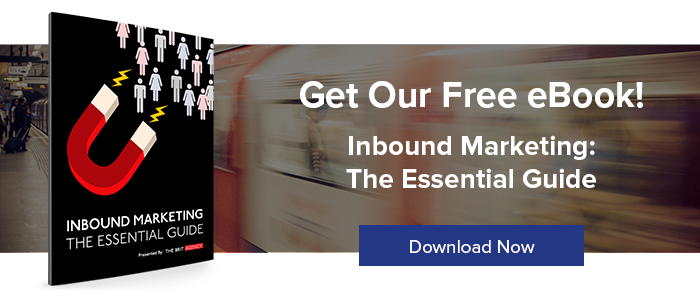Now that you have created your buyer personas, it’s time to get to work on the buyer’s journey.
The buyer’s journey is a three-step process that a potential buyer goes through before they make their final purchase, and it's a fundamental part of the Inbound Marketing process. If you get this right, then your content strategy will easily fall into place as the next stage. The three stages of the buyer’s journey are Awareness, Consideration and Decision.
These three stages can be mapped directly to the three levels of the Inbound Marketing funnel.
- Top of the funnel: Awareness Stage
- Middle of the funnel: Consideration Stage
- Bottom of the funnel: Decision Stage
By considering these stages when creating your website, content, offers and CTAs, you can help guide your website visitors to their final purchase decision.
And, with over 81% of buyers conducting Internet research before purchasing a product and service, being able to do so can be critical to your success.
Awareness Stage - Top of the Funnel
At the awareness stage, your buyers aren’t looking for a solution. They have only just become AWARE of a challenge or opportunity, and as a result, they now have a need for information. They are looking for answers, resources, education and data to better understand their challenge.
To capture your buyer’s interest at this stage, you will want to provide helpful information that relates to the symptoms of the problem, the pain points being felt, potential causes of those pain points and tips on the various solutions.
Buyer’s in this stage of the journey will often gravitate towards your blog or social. Both platforms should focus on attracting buyers in the awareness stage by offering vendor neutral content with information about characterizing problems and symptoms, as well as troubleshooting, resolving or preventing a particular problem.
Other more valuable assets like whitepapers, eBooks and checklists can be used to identify the buyers in this stage and are great way to gather contact information. Place these assets behind a form that require information in exchange for these assets. But be careful! Asking for too much information, this early on, can be a deterrent.
Consideration Stage - Middle of the Funnel
Once your buyer has identified the source of their problem, and a set of potential solutions for solving that problem, the buyer is CONSIDERING the different solutions, which may or may not include your products and services.
At this stage of the buyer’s journey, general information will be a waste of time. The buyer will want to consume information about your product or service, as well as other products and services to educate themselves on their choices. They will often head to your “About Us”, “Expertise” or “Services/Products” pages.
The best way to cater to this interest is to create content assets that support your product or service as a consideration.
Assets such as literature on the benefits of your product/service, brochures, sell sheets, expert guides, comparisons, case studies, demo videos and webinars will help buyer better understand how your products and services deliver a solution to their problem.
If you were able to gather contact information during the awareness stage, this is a good time to start nurturing your lead with emails containing relevant content. This content should relate to their position in the buyer’s journey, as well as their persona.
If they have not yet offered contact information in exchange for a valuable content offer, try including CTAs for your consideration stage offers at the bottom of your “About Us”, “Expertise” or “Services/Products” pages. This will help you guide your prospect through the buyer’s journey, while helping you to obtain valuable contact information.
Decision Stage - Bottom of the Funnel
Finally, the buyer will need to make a DECISION.
At this stage, your prospects will gravitate towards information that tells them exactly what they have to do to become a customer. They will be looking at your pricing and testimonials, as well as your “Contact Us” page.
Creating offers such as vendor/product/service comparisons, assessments, success stories, consultations, demos, analyses and free trials also add value at this stage.
If your prospect is looking at this type of content, it is time to act. Buyers at this stage will actually want an opportunity to speak with someone in sales or try the product themselves so, this is where your sales team can play a role and help the buyer make a decision.
As soon as possible, have a representative reach out to your prospect.
Once you have determined the needs of your buyer at each stage of the journey, you can start creating valuable content that will help nurture your prospects from awareness to decision. Doing so will help qualify prospects as marketing leads or sales leads, and ultimately generate more customers from your online efforts.
THE BRIT AGENCY is a B2B Inbound Marketing Agency providing Inbound Marketing, Inbound Website Design and Inbound Sales services to companies around the world. We're focused on growing website traffic, qualified leads and sales, using the Inbound lead generation and marketing automation process.
THE BRIT AGENCY is a certified Gold Tier Hubspot Partner, a HubSpot COS certified Inbound Website Design Agency, a Shopify eCommerce Partner, and a certified "Google Badged Agency Partner". We have offices in Toronto and Barrie, Canada, and Salisbury, UK.


